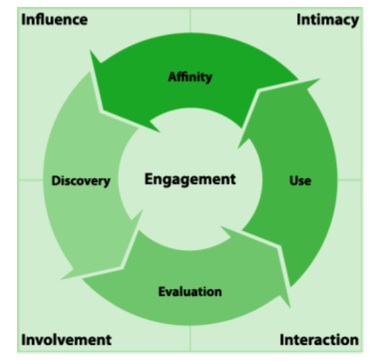 Anyone who hasn’t yet grasped the momentum building in the virtual worlds sphere, hasn’t seen the ever-growing pile of white papers being released. Another example from the past week or so comes from the US-based non-profit entity, Athena Alliance.
Anyone who hasn’t yet grasped the momentum building in the virtual worlds sphere, hasn’t seen the ever-growing pile of white papers being released. Another example from the past week or so comes from the US-based non-profit entity, Athena Alliance.
Authored by Robert B. Cohen, Ph.D, the paper has the title of Virtual Worlds and the Transformation of Business: Impacts on the U.S. Economy, Jobs and Industrial Competitiveness. As its title suggests, the focus is the US economy and the opportunities virtual worlds may provide. Cohen has some credibility in the tech field, having advised former New York Governor Mario Cuomo on technology as well as being an economic advisor for President George H.W. Bush’s National Advisory Commission on Semiconductors.
Given his long stint in the field, Cohen is upbeat on the potential of virtual worlds for the US economy. After an initial read-through, I found there were some fascinating concepts in the report, particularly the concept of a ‘guild system’ approach to business and virtual worlds. I caught up with the author to ask him about that and the impact of the imminent change in US government:
Lowell Cremorne: From a US standpoint, do you see the imminent change of government federally causing fundamental changes in approach to virtual worlds in the short term?
Robert Cohen: Yes, I think that the desire to use technology to make government work “smarter” and more efficiently will certainly lead to more use of Virtual World technology in the US government itself. This might mean a lot of support for efforts such as the AirForce’s MyBase, where a wide range of training from basic through fairly complex, will all be done in a Virtual World setting.
It would also help bring Virtual World technology for medical care that is being offered by Forterra to the military will get a lot of support. Secondly, the emphasis on helping other parts of the economy use new technology, including Virtual World technology could mean that there
would be some effort made to help businesses and universities use Virtual Worlds for training and education and to support the creation of new
platforms that support the technology with more open standards. This is similar to what is being pushed by the Virtual World Roadmap effort.
Lowell Cremorne: You mention throughout your report the ‘guild system’ approach to business and virtual worlds. Could you summarise that approach and would you agree that it’s a significant mindset change for business?
Robert Cohen: The approach contrasts two outcomes for firms of the future. In one, the multi-industry conglomerate, firms get bigger because virtual worlds help them expand their control over more widespread and sophisticated operations in diverse but related industries. So, I might see auto and aerospace firms merge and bring suppliers that serve them under their wing.
In the other outcome, I would expect a rise of smaller, more agile and nimble “technology user” firms that build up an impressive array of expertise within their firm. These “modern” guild system firms differ from guilds because they can track and support the development of expertise within their firm and clearly define their capabilities to others. As a result, a group of these firms can partner to attack a specific project, say to design a new cancer drug. But people in the firm might also work closely with other, similar “modern guild system” firms to decode a gene with an entirely different group of partners. This kind of joining on a specific task, completing it, retaining some of the intellectual property from it, and then licensing it or producing it jointly is the way this type of firm would work. It might have a series of relationships that are built, continued, broken and then rebuilt with different partners. It is kind of a footloose consultant writ large. I would agree that it is a significant mindset change for business, but you do see some firms operating with elements of this today.
—
It’s certainly a compelling vision for businesses to investigate. The need for a business to be agile and innovative and to have a heavy emphasis on intellectual capital isn’t a new concept. What Cohen’s paper does illustrate is the impact of a link between the collaborative power of virtual worlds and the current business environment where nimbleness is key.



Recent Comments